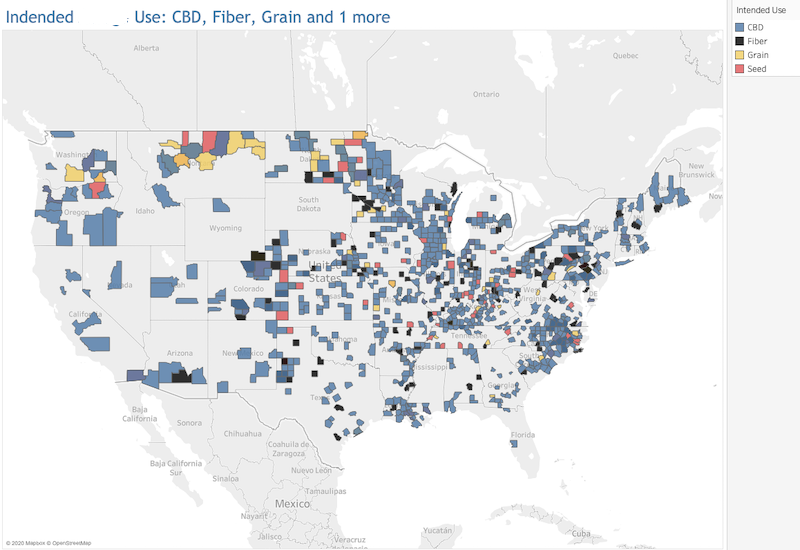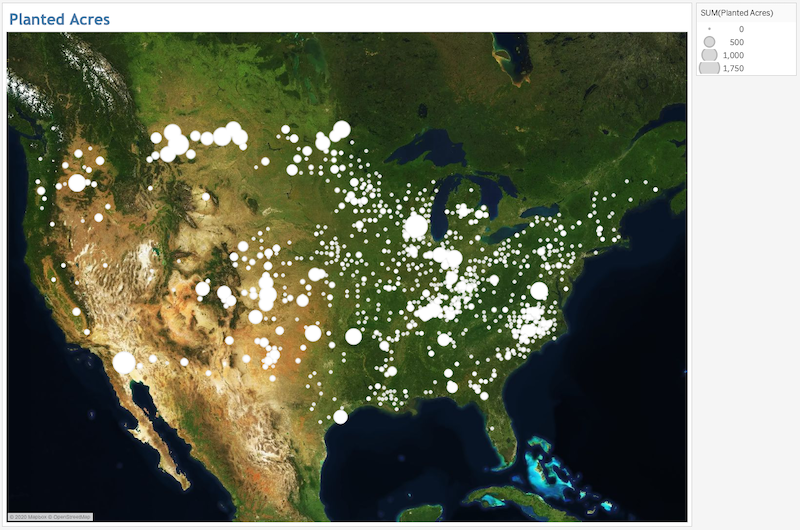11.21.2025
Sausage casings bulletin, November 21, 2025

...

The USDA Farm Service Agency (FSA) gave us our first look at planted hemp acreage yesterday. We had hoped that the August Crop Report would offer comprehensive numbers for planted hemp acreage, but this is not the case, with 42,275 acres registered to date. For other crops in the Jacobsen’s reporting portfolio, crop acreage in this August report is also incomplete. We typically see crop acreage numbers in the October report that are within 1% of actual, we expect no impact on hemp pricing from this early report. Here’s a snapshot of distribution:

Hemp is a unique crop in the FSA reporting landscape. We’d surmised that the mandate to report hemp acreage to FSA would result in early and comprehensive numbers, but the pandemic has not helped agencies or producers. Farmers have been provided a much needed 30-day extension. All hemp producers are required to report their planted hemp acreage to FSA by this Friday, August 15.
We do not expect all acres to be reported. The explosive hemp sector was difficult to measure in 2019, but now it is even harder in the wake of the pandemic, with widespread office closures. There are a number of issues to work out with new hemp regulations, including requirements that many stakeholders aren’t clear how they’ll be effectively handled, agencies included. How will FSA handle hemp crop reporting in places like California’s Imperial Valley, where producers can grow year-round, or the 1400+ acres of US indoor/greenhouse area? FSA does have provisions for rolling reporting on some crops, called continuous certification. It isn’t clear whether hemp is eligible for continuous certification, or how that will impact crop reporting acreage. Will reporting by states that are continuing this year with the 2014 Pilot Program rules be consistent with the information from states under USDA IFR?
We are happily surprised by the amount of hemp fiber plantings reported in various states. We’ve discussed the trend for producers to experiment with grain and fiber on small scale to gain experience growing hemp. Louisiana shows over 200 acres planted for fiber, almost 175 of them on one farm in Madison County. Over 400 acres are reported for one farm in Saguache County, CO.
Permitted acreage is still featured in hemp industry commentary, but this has proven to be an unreliable indicator of supply. We know that only a fraction of these licensed acres will actually be harvested. Only a portion of those harvested crops will transact. The September report should provide more insight, but we project that it will fall short of capturing all of the 2020 crop.
The August report shows 6,868 acres planted for seed, revealing another shortcoming of current reporting. Hemp nomenclature is far from standardized, so we presume that many producers growing hempseed, or “grain”, listed “seed” for intended use. Several thousand acres of this is likely hempseed, based on the location in the Northern Plains. The Jacobsen uses “hempseed” for grain/oilseed, and “seed” denotes for sowing. This is another example of how the lack of standards in the industry can have unforeseen results. Below is a visual of the 2020 crop breakdown based on current reporting. We expect this to change and will provide a full analysis following the September report.
